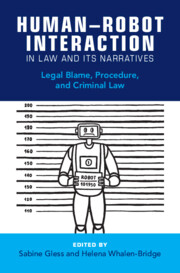Human–Robot Interaction in Law and Its Narratives
Robots are with us, but law and legal systems are not ready for them. This book identifies the issues posed by human–robot interactions in substantive law, procedural law, and law’s narratives, and suggests how to address them. When human–robot interaction results in harm, who or what is responsible? Part I addresses substantive law, including the issues raised by attempts to impose criminal liability on different actors. When robots perceive aspects of an alleged crime, can they be called as a sort of witness? Part II addresses procedural issues raised by human–robot interactions, including evidentiary problems arising out of data generated by robots monitoring humans, and issues of reliability and privacy. Beyond the standard fare of substantive and procedural law, and in view of the conceptual quandaries posed by robots, Part III offers chapters on narrative and rhetoric, suggesting different ways to understand human–robot interactions and how to develop coherent frameworks to do that. This title is available as Open Access on Cambridge Core.
Sabine Gless is Professor of Criminal Law at the University of Basel, Switzerland. Her research focuses on criminal justice issues related to the digitization of our living environment, as well as on human rights in transnational criminal law. As a member of editorial boards of journals and as a delegate in science funding committees, she particularly aims to promote interdisciplinary research on law and new technology.
Helena Whalen-Bridge is Associate Professor at the Faculty of Law, National University of Singapore. A recipient of multiple competitive research grants, her research interests include legal ethics and access to justice, legal narrative, and legal education. Her research in narrative was awarded the 2019 Teresa Godwin Phelps Award for Scholarship in Legal Communication, and she is the recipient of NUS Teaching Excellence Awards.

